Fine lines are among the earliest visible signs of aging, often appearing as soft creases around the eyes, mouth, and forehead. While they are a natural part of the skin’s aging process, their premature emergence can be accelerated by environmental factors, stress, and inadequate skin care. For those aiming to preserve a youthful appearance, choosing the right skin care for fine lines is both a science and an art. Understanding how and why these lines form, along with which ingredients and routines are most effective, can empower individuals to make informed, proactive choices. This article offers a comprehensive guide to evidence-based strategies for selecting the most suitable skin care for lines, incorporating insights from dermatology, cosmetic science, and holistic wellness.
You may also like: Eliminate Acne, Achieve Radiant Youthfulness: CLEARSTEM Skincare Redefines Skin’s Future
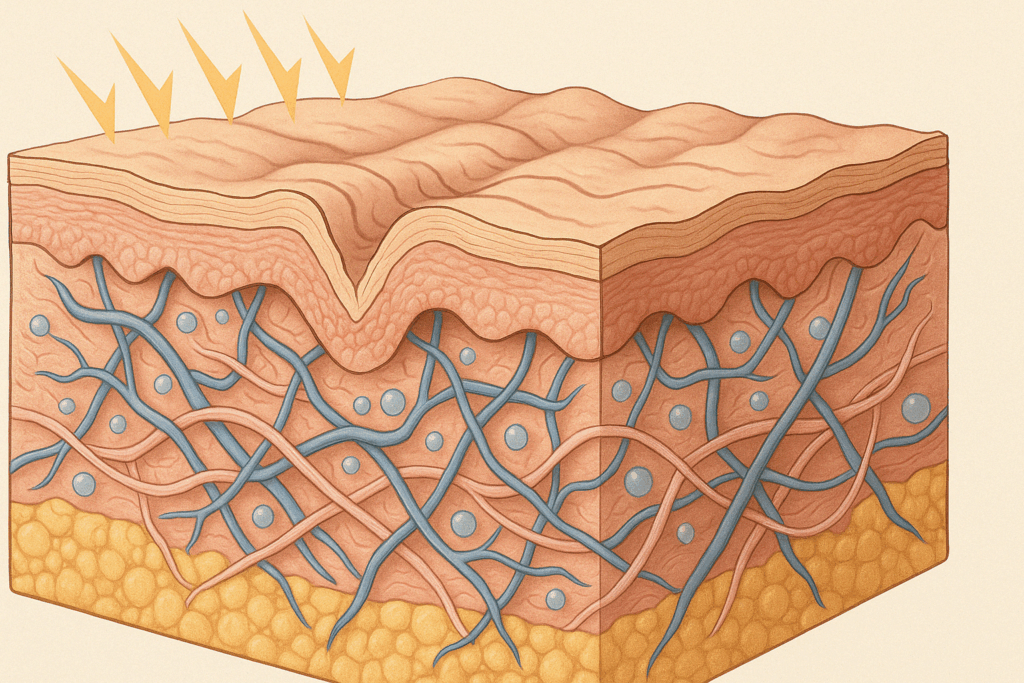
Understanding the Science of Fine Lines and Skin Aging
Before delving into product selection, it’s essential to grasp the biological basis of fine lines. As we age, the skin’s production of collagen and elastin slows significantly. These two structural proteins are responsible for maintaining the skin’s firmness and elasticity. Reduced collagen synthesis leads to thinner, more fragile skin, which is less able to resist the mechanical forces of facial expressions and environmental stressors. The gradual depletion of hyaluronic acid, a key molecule responsible for hydration and plumpness, further exacerbates the development of creases.
External factors, such as ultraviolet (UV) radiation, pollution, and lifestyle habits like smoking or poor nutrition, contribute to what dermatologists call “extrinsic aging.” This is the form of aging that can be accelerated by daily behaviors, as opposed to intrinsic aging, which occurs naturally over time. UV radiation, in particular, damages the skin’s DNA and accelerates the breakdown of collagen and elastin. Free radical formation from environmental pollutants can also inflame and degrade skin cells. Together, these processes contribute to the visible signs of aging, including fine lines, dullness, and uneven texture.
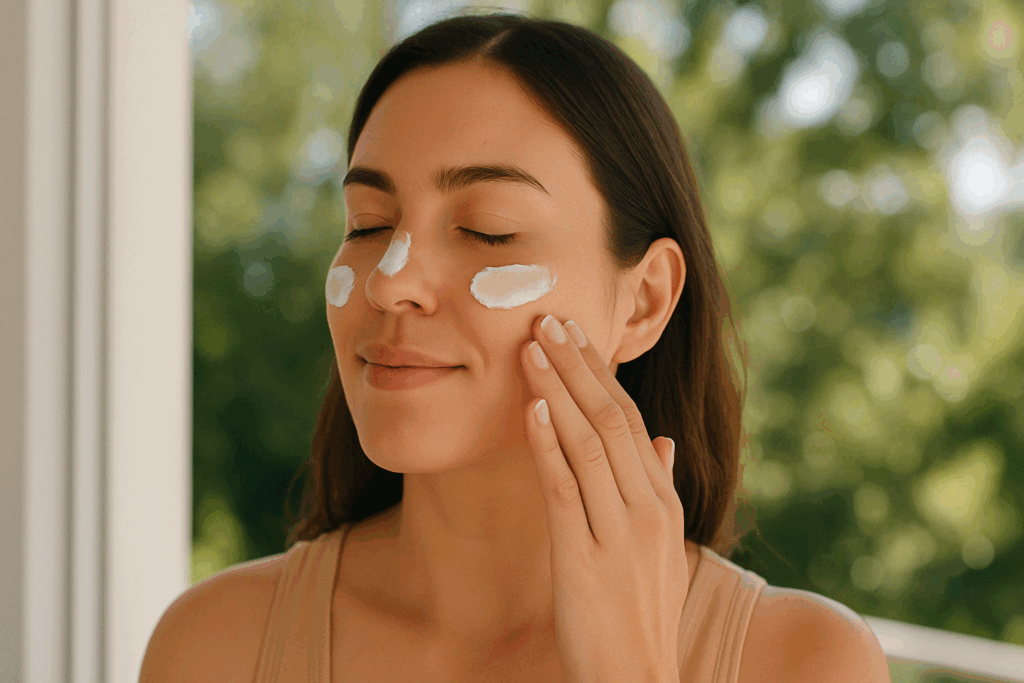
The Role of Early Prevention in Skin Care for Fine Lines
Prevention is a cornerstone of effective skin care for fine lines. Dermatological research consistently shows that starting a targeted routine before fine lines become deeply etched into the skin is more effective than attempting to reverse them later. Early prevention includes wearing broad-spectrum sunscreen daily, even during overcast weather or when indoors near windows, to protect against both UVA and UVB radiation.
Antioxidants such as vitamin C, vitamin E, niacinamide, and coenzyme Q10 are also critical in preventative regimens. These compounds neutralize free radicals and reduce oxidative stress, both of which play key roles in the formation of fine lines. Furthermore, incorporating a gentle exfoliating routine using alpha hydroxy acids (AHAs) or polyhydroxy acids (PHAs) can stimulate cell turnover and enhance the skin’s ability to absorb active ingredients.
Hydration is another foundational element in preventative skin care for lines. A well-moisturized skin barrier maintains its integrity and resilience better than dehydrated skin, which is more prone to creasing and irritation. Ingredients like hyaluronic acid, glycerin, and ceramides help reinforce the skin’s natural moisture balance, while also improving suppleness and tone.
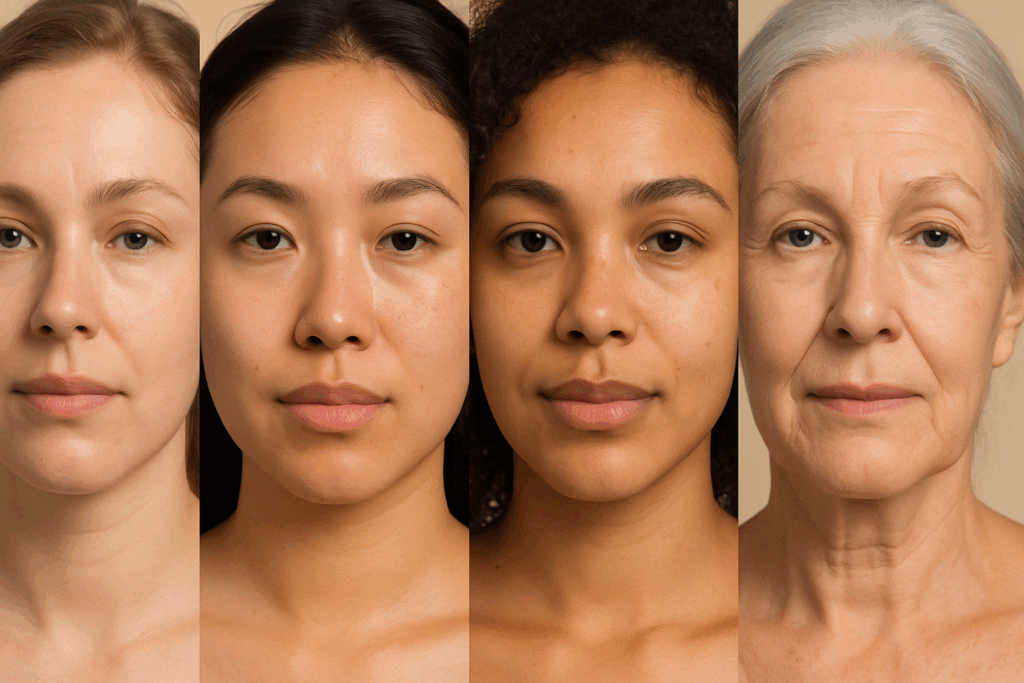
Evaluating Skin Type Before Choosing Products for Fine Lines
Not all products for fine lines are universally suitable; individual skin type plays a critical role in determining efficacy and tolerability. Those with dry or sensitive skin should opt for formulations that are fragrance-free, hypoallergenic, and rich in emollients. These products often contain soothing ingredients such as panthenol, allantoin, and colloidal oatmeal, which calm inflammation while supporting barrier repair.
For oily or acne-prone skin, non-comedogenic and lightweight formulations are essential. People in this category should seek gel-based serums and oil-free moisturizers containing ingredients like niacinamide, which regulates sebum production while also strengthening the skin barrier and minimizing fine lines. Combination skin may benefit from a multi-step routine that addresses different zones with targeted treatments—hydrating lighter areas and nourishing drier patches.
Mature skin, which often includes both dryness and loss of firmness, may respond well to richer formulations that combine hydrating agents with peptides and retinoids. However, product tolerance must be considered. For individuals new to active ingredients like retinol, a gradual introduction is advised to avoid irritation, especially around the delicate eye area. Consulting a dermatologist can help tailor a regimen that aligns with both skin type and goals.
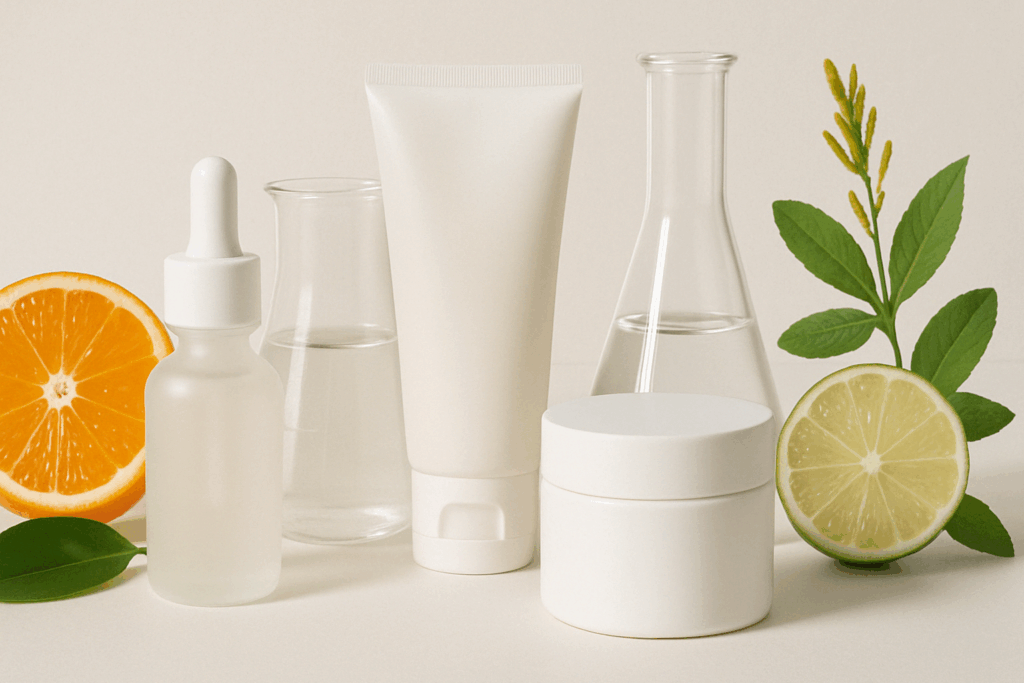
Active Ingredients with Clinically Proven Benefits
One of the most effective ways to select skin care for fine lines is to understand which ingredients are supported by rigorous scientific research. Retinoids, which include over-the-counter retinol and prescription-strength tretinoin, are perhaps the most studied and validated ingredients for reducing fine lines. They work by stimulating collagen production, accelerating cellular turnover, and smoothing skin texture over time. Despite their proven efficacy, retinoids can be irritating, particularly in the initial weeks of use, and should be introduced gradually.
Peptides are another class of compounds frequently found in products for fine lines. These short chains of amino acids signal the skin to produce more collagen and elastin, improving firmness and elasticity. Unlike retinoids, peptides are generally well tolerated and can be used in both morning and evening routines.
Antioxidants, as mentioned earlier, are essential for preventing and minimizing fine lines. Vitamin C not only scavenges free radicals but also plays a role in collagen synthesis. Niacinamide offers a broad spectrum of benefits, including barrier reinforcement, pigmentation reduction, and improved elasticity. Additionally, resveratrol and ferulic acid are potent antioxidants often included in advanced anti-aging formulations.
Hyaluronic acid is indispensable for its ability to retain up to 1,000 times its weight in water. This hydration effect plumps the skin and temporarily reduces the appearance of fine lines. When used consistently, it also supports long-term improvements in texture and smoothness. Ceramides, fatty acids, and cholesterol complete the trio of essential lipids required for a healthy skin barrier, which in turn enhances the effectiveness of active treatments.
Best Practices for Building a Routine with Products for Fine Lines
Establishing a structured, consistent routine is vital for success in using skin care for fine lines. A morning regimen should begin with a gentle cleanser followed by an antioxidant serum, such as one containing vitamin C, to provide daily environmental protection. Next, a moisturizer suited to your skin type can help lock in hydration. The final and non-negotiable step is sunscreen with a minimum SPF 30, preferably one containing zinc oxide or titanium dioxide for broad-spectrum defense.
The evening routine is an opportunity to incorporate reparative and regenerative products. After cleansing, exfoliating with a mild AHA or BHA two to three times per week can remove dead skin cells and enhance absorption of treatment serums. A retinol-based product can then be applied, starting with a lower concentration and increasing as tolerated. Following up with a hydrating moisturizer containing hyaluronic acid and ceramides can help buffer any potential irritation and support overnight recovery.
Consistency and patience are essential, as most products for fine lines require at least 6 to 12 weeks to yield visible improvements. Cycling active ingredients, allowing rest days, and layering correctly can help maintain skin health without causing undue irritation or sensitivity. Avoiding overuse of exfoliants or combining too many active ingredients in a single routine can prevent barrier damage and inflammation.
Navigating Misinformation and Marketing Hype
In a market saturated with lofty claims and eye-catching packaging, it can be challenging to discern which products truly deliver on their promises. Many skin care products for fine lines are marketed using buzzwords like “anti-aging,” “miracle,” or “age-reversing,” which may not reflect the actual efficacy of the ingredients. Understanding ingredient lists and seeking products that cite peer-reviewed studies or clinical trials can offer more reliable guidance than marketing language alone.
The order of ingredients on a label also provides insight. Ingredients are listed in descending order by concentration, so if a highly promoted active appears at the end of the list, it’s likely present in negligible amounts. Be wary of products that rely heavily on fragrance, artificial dyes, or excessive alcohol, as these can disrupt the skin barrier and contribute to irritation.
Independent reviews and dermatologist-recommended products tend to offer more trustworthy perspectives. Brands that prioritize transparency, publish research data, or consult with medical experts often have more credible offerings. Consumers should also remain cautious of “clean beauty” or “natural” labeling, which, while appealing, is not regulated and may exclude scientifically backed ingredients.
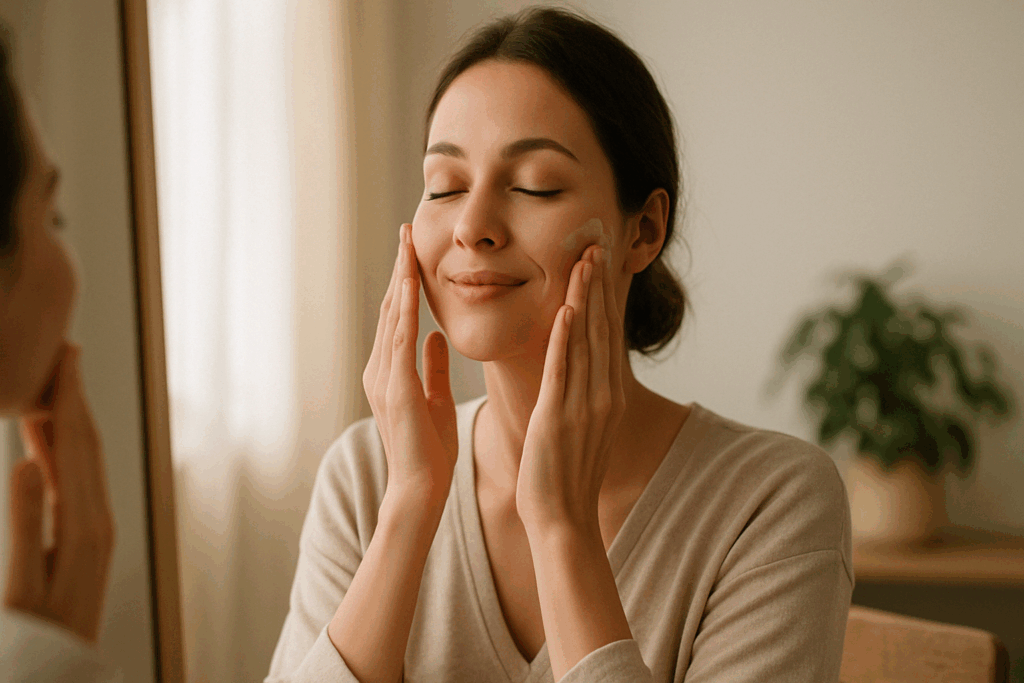
The Psychodermatological Dimension: Skin Care and Emotional Well-Being
Though often overlooked, the psychological impact of skin health cannot be overstated. The appearance of fine lines can influence self-esteem, especially in societies that equate youthfulness with vitality and attractiveness. Psychological studies in the field of psychodermatology show that improved skin appearance can enhance mood, increase confidence, and even reduce social anxiety.
Developing a thoughtful routine for skin care for lines can serve as a daily ritual of self-care, fostering mindfulness and promoting a sense of control over one’s aging process. The act of investing in oneself through evidence-based practices can counter feelings of helplessness or dissatisfaction. This emotional dimension adds another layer of significance to choosing skin care for fine lines that is not only effective but also enjoyable and nurturing.
It is also important to recognize and validate the emotional journey that accompanies visible aging. Shifting the focus from “anti-aging” to “healthy aging” helps reframe the conversation in a more empowering, body-positive light. In this framework, skin care becomes not just about erasing lines but about supporting the skin’s natural functions and celebrating longevity.
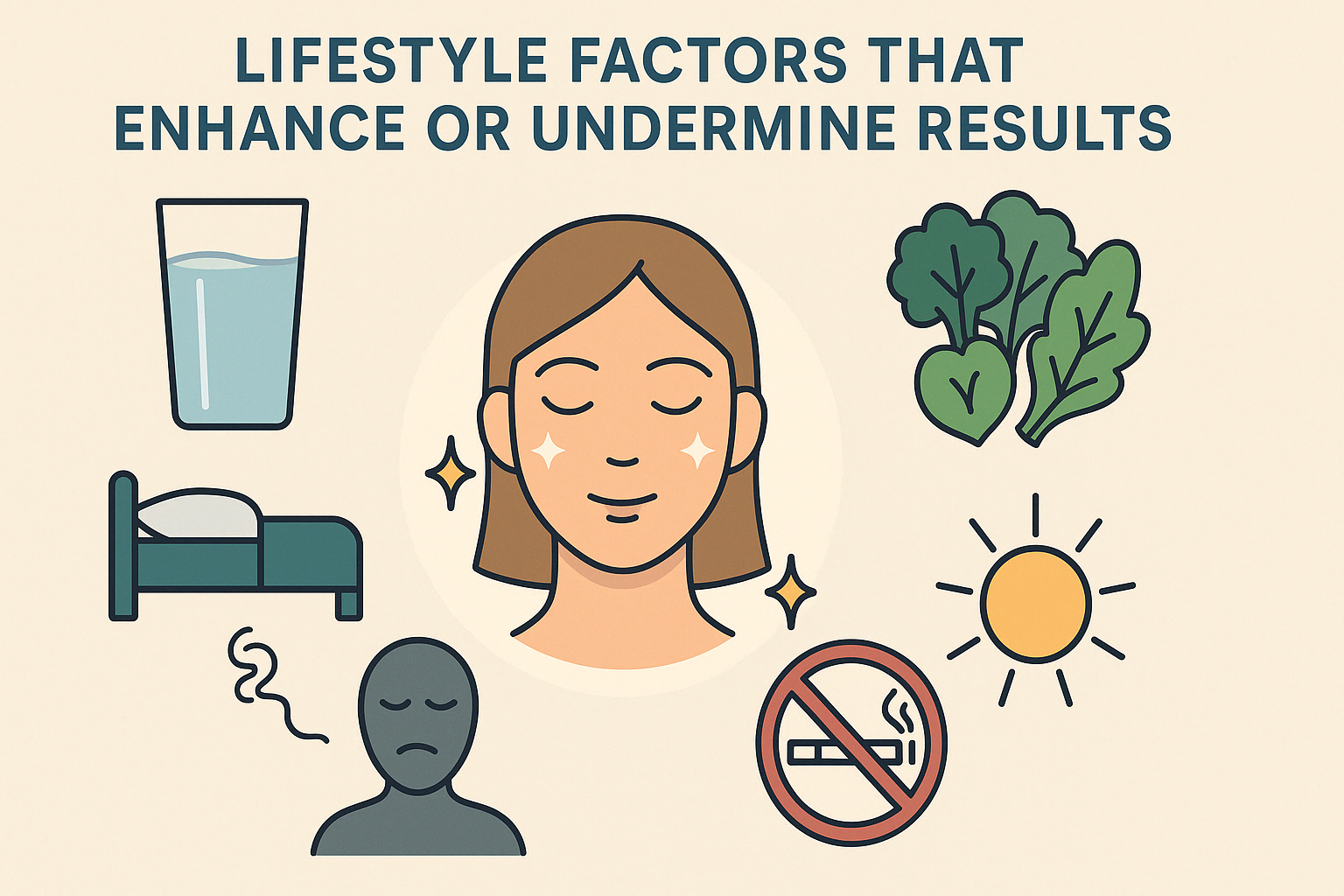
Lifestyle Factors That Enhance or Undermine Results
Even the most sophisticated products for fine lines cannot compensate for the absence of foundational lifestyle habits that support skin health from within. Nutrition plays a pivotal role, with diets rich in antioxidants, omega-3 fatty acids, and vitamins A, C, and E contributing to cellular repair and inflammation reduction. Hydration is equally vital, not just topically but systemically, with sufficient water intake helping to maintain skin elasticity.
Sleep, often called the body’s “master repairer,” facilitates the release of growth hormones and the turnover of skin cells. Chronic sleep deprivation has been linked to increased signs of intrinsic aging, including fine lines and uneven pigmentation. Practicing good sleep hygiene and aiming for 7 to 9 hours per night can yield visible skin benefits.
Stress management is another overlooked but significant factor. Chronic stress elevates cortisol levels, which can impair skin barrier function, accelerate collagen breakdown, and exacerbate inflammatory skin conditions. Practices like yoga, meditation, and mindful breathing can mitigate stress and support healthier skin aging. Smoking cessation, alcohol moderation, and sun avoidance are further modifiable behaviors that can significantly impact the effectiveness of skin care for lines.
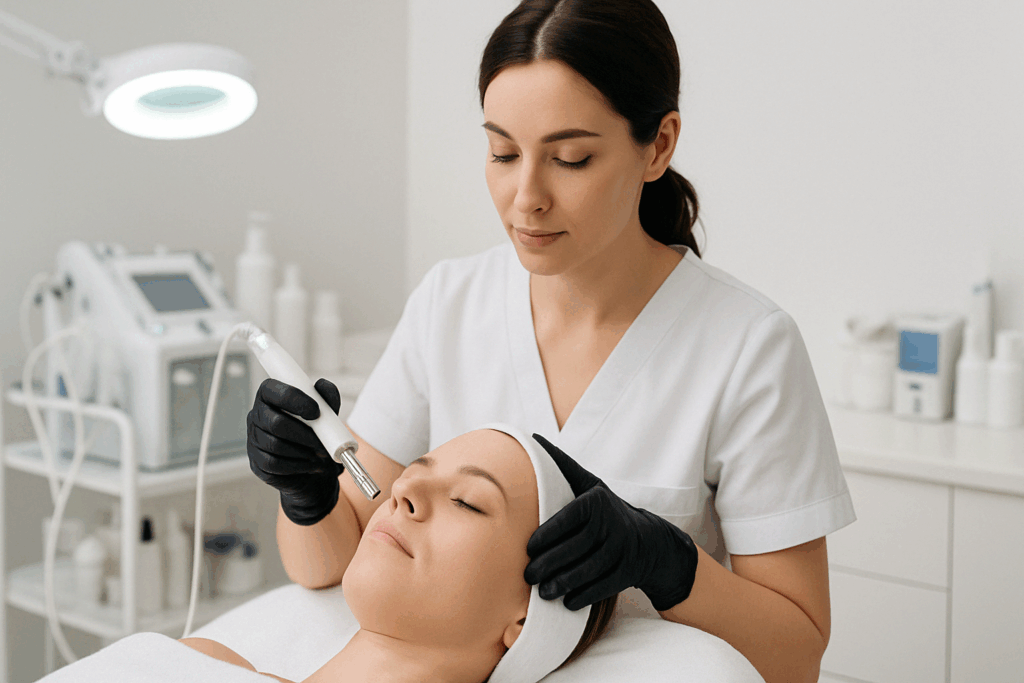
Integrating Professional Treatments with At-Home Regimens
While daily skin care for fine lines forms the cornerstone of prevention and treatment, professional interventions can complement and enhance results. Dermatological procedures such as microneedling, laser resurfacing, chemical peels, and radiofrequency therapy stimulate collagen remodeling and improve product penetration. These procedures can provide more dramatic results when combined with consistent at-home routines.
Injectables like Botox and dermal fillers offer non-surgical options for managing dynamic and static lines, respectively. Botox temporarily relaxes the muscles responsible for expression lines, while fillers restore volume to areas that have thinned over time. These treatments, when administered by licensed professionals, can offer subtle yet effective enhancements without disrupting facial harmony.
Regular consultations with dermatologists or licensed estheticians can help track progress, refine product choices, and avoid unnecessary or redundant treatments. Integrating professional advice with an evidence-based home routine offers the most comprehensive approach to managing fine lines with both safety and efficacy in mind.
Frequently Asked Questions: Skin Care for Fine Lines
1. Can seasonal changes affect how skin care for fine lines should be used?
Yes, seasonal changes significantly influence how the skin reacts to products for fine lines. During colder months, the skin tends to become drier and more sensitive due to low humidity and indoor heating, which may necessitate richer, more emollient-based products. In contrast, warmer seasons often increase sebum production and perspiration, which can alter the skin’s tolerance to heavier formulations. Adapting your skin care for fine lines to match seasonal needs helps maintain balance and enhances product efficacy. For instance, switching to lightweight, hydrating serums with hyaluronic acid in summer and incorporating occlusive-rich creams in winter supports the skin’s resilience across fluctuating conditions.
2. How does air quality impact the effectiveness of skin care for fine lines?
Poor air quality, particularly in urban or polluted environments, can compromise the skin’s barrier and accelerate the appearance of fine lines. Airborne pollutants generate free radicals that trigger oxidative stress, weakening collagen and elastin over time. In such settings, skin care for fine lines should emphasize antioxidant-rich products and barrier-reinforcing ingredients like ceramides or squalane. Using an evening cleanser that effectively removes particulate matter is also critical in such conditions. Incorporating a layered defense with protective serums and mineral-based sunscreens can significantly enhance the long-term success of products for fine lines.
3. Can digital screen exposure contribute to fine lines, and should skin care for lines address this?
Yes, emerging evidence suggests that prolonged exposure to high-energy visible (HEV) light or “blue light” from digital devices may contribute to premature aging, including fine lines. HEV light can penetrate the skin and provoke oxidative stress, much like UV radiation. While the impact may not be as severe as UV, it’s a growing area of concern in dermatology. Some advanced products for fine lines now include ingredients like lutein or algae extracts that help shield against blue light damage. Adding these targeted solutions into your skin care for lines can provide an extra layer of preventative care, particularly for those with high daily screen time.
4. Are there specific application techniques that enhance the performance of skin care for fine lines?
Application technique plays a surprisingly important role in how well products for fine lines perform. Rather than aggressively rubbing products in, patting or pressing them into the skin helps reduce tugging and prevents mechanical breakdown of elastic fibers. Using upward, sweeping motions can counteract the gravitational pull that contributes to sagging over time. Additionally, warming a product slightly between the fingertips before application can enhance absorption, especially for thicker creams. Integrating facial massage tools or devices designed to stimulate circulation can further amplify the benefits of skin care for lines by improving lymphatic drainage and promoting a firmer appearance.
5. Can skin care for fine lines be integrated with makeup without reducing effectiveness?
Yes, integrating skin care for fine lines with makeup is entirely possible—and when done correctly, it can even enhance the efficacy of both. Priming the skin with a hydrating serum and moisturizer tailored to fine lines allows makeup to sit more smoothly, minimizing the visibility of creases. Silicone-based primers can fill in shallow lines, providing a smoother canvas for foundation without negating the benefits of treatment products. The key is to allow sufficient absorption time between skin care and makeup application. Opting for makeup products that include skin-nourishing ingredients further supports the integrity of skin care for lines throughout the day.
6. How do hormonal changes influence the choice of products for fine lines?
Hormonal fluctuations, particularly those associated with menopause, can dramatically alter skin physiology, making the selection of products for fine lines more complex. Declining estrogen levels reduce collagen production and skin hydration, leading to more pronounced creasing and loss of firmness. During these phases, richer formulations with peptides, estrogen-mimicking botanicals like genistein, and barrier-strengthening lipids may become more necessary. It’s also beneficial to reassess your routine periodically to ensure that your skin care for fine lines aligns with your current hormonal profile. A personalized approach often yields better long-term results than a one-size-fits-all regimen.
7. Is it beneficial to cycle or rotate products for fine lines over time?
Yes, strategic cycling of skin care for fine lines can prevent stagnation and reduce the risk of overexposure to potent actives like retinoids or exfoliants. Skin can build tolerance or become sensitized when exposed to high concentrations of the same ingredients for extended periods. Rotating between products that target different mechanisms—such as hydration, exfoliation, and collagen stimulation—can maintain results while preserving barrier health. For example, you might alternate between a retinol serum, a peptide cream, and an antioxidant formula throughout the week. This method allows a broader spectrum of benefits from products for fine lines while minimizing potential irritation.
8. How do travel and changes in climate affect skin care for lines?
Travel, especially between climates, can disrupt your skin’s natural rhythm, often exacerbating fine lines due to shifts in humidity, temperature, and water quality. Airplane cabins, for instance, have extremely low humidity, which accelerates trans-epidermal water loss and can make lines appear more prominent. To adapt, it’s advisable to carry a mini regimen that includes a deeply hydrating mist, a hyaluronic acid-based serum, and a thicker moisturizer. Reapplying these selectively during long flights or immediately upon arrival can help maintain hydration and smoothness. For frequent travelers, customizing skin care for lines to accommodate different environmental stressors ensures consistent care regardless of location.
9. Can dietary supplements support the effectiveness of skin care for fine lines?
Yes, nutritional supplementation can complement topical skin care for fine lines by addressing skin aging from within. Supplements containing collagen peptides, vitamin C, zinc, and hyaluronic acid have shown promise in clinical studies for improving skin elasticity and hydration. Omega-3 fatty acids, found in fish oil or flaxseed, help reduce inflammation and bolster the lipid barrier, which enhances the skin’s response to topical treatments. However, supplements should never replace a balanced diet or proper skin care—they serve as an adjunct rather than a standalone solution. When choosing supplements, opt for those with third-party testing and published clinical results to support their role alongside products for fine lines.
10. What are the emerging technologies or innovations in skin care for fine lines?
The field of skin care for fine lines is rapidly evolving with exciting innovations, particularly in delivery systems and bioactive compounds. One emerging technology involves encapsulated retinoids and antioxidants that offer slow, controlled release to minimize irritation while maintaining potency. Another advancement is the use of biomimetic peptides that mimic the skin’s natural signaling mechanisms to trigger collagen production more efficiently. There’s also growing interest in microbiome-friendly formulations that maintain skin flora balance while addressing fine lines. These new directions indicate a shift toward more sophisticated, synergistic products for fine lines that offer targeted results with minimal side effects, making the future of anti-aging skin care both promising and more personalized.
Choosing Skin Care for Fine Lines with Confidence and Clarity
Navigating the vast world of anti-aging products can be overwhelming, but with a science-backed approach, choosing skin care for fine lines becomes a purposeful, empowering process. Understanding your skin type, recognizing evidence-based ingredients, and committing to a consistent routine form the foundation of effective skin care. Products for fine lines should not promise miracles but rather provide steady, measurable improvements in texture, hydration, and resilience over time.
By integrating thoughtful product selection with holistic lifestyle practices, individuals can take control of how their skin ages—not through fear or vanity, but through informed, compassionate self-care. This approach not only promotes healthier, younger-looking skin but also enhances emotional well-being and confidence. In the end, choosing the right skin care for lines is not about turning back the clock but about embracing a future where skin health is synonymous with self-respect, vitality, and balance.
Was this article helpful? Don’t let it stop with you. Share it right now with someone who needs to see it—whether it’s a friend, a colleague, or your whole network. And if staying ahead on this topic matters to you, subscribe to this publication for the most up-to-date information. You’ll get the latest insights delivered straight to you—no searching, no missing out.
Further Reading:
10 skin care secrets for healthier-looking skin
Anti-Aging Skin Care: Ingredients and Routine
Skin anti-aging strategies – PMC
Disclaimer
The information contained in this article is provided for general informational purposes only and is not intended to serve as medical, legal, or professional advice. While Health11News strives to present accurate, up-to-date, and reliable content, no warranty or guarantee, expressed or implied, is made regarding the completeness, accuracy, or adequacy of the information provided. Readers are strongly advised to seek the guidance of a qualified healthcare provider or other relevant professionals before acting on any information contained in this article. Health11News, its authors, editors, and contributors expressly disclaim any liability for any damages, losses, or consequences arising directly or indirectly from the use, interpretation, or reliance on any information presented herein. The views and opinions expressed in this article are those of the author(s) and do not necessarily reflect the official policies or positions of Health11News.